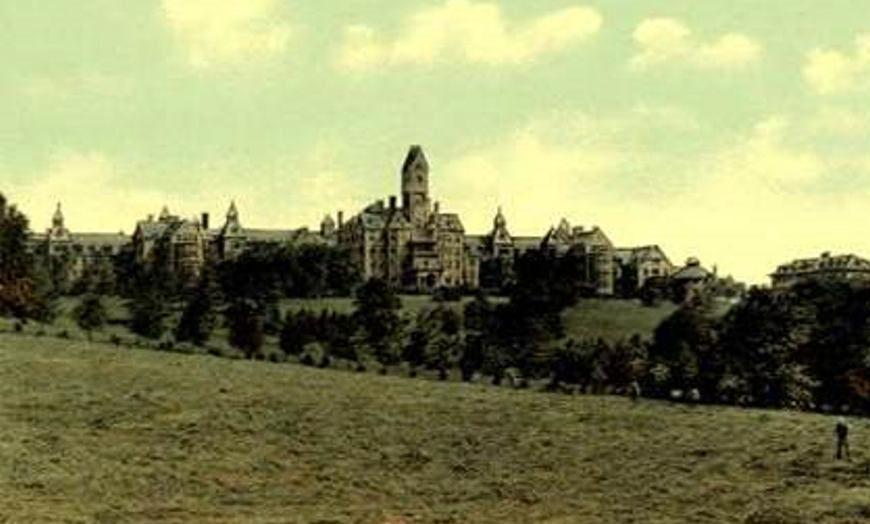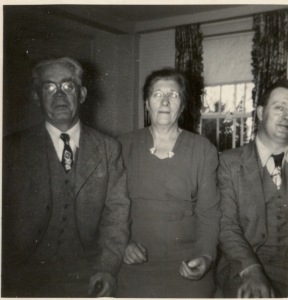Translating deep thinking into common sense
The First Brain-Science Catastrophe: One Man’s Story

By Walter Donway
August 5, 2014
SUBSCRIBE TO SAVVY STREET (It's Free)
My family had a Friday evening ritual. My mother would make sandwiches, pack a thermos, and my father, arriving home, would take it and turn to the door. We called it “visiting Tony.” My grandfather, Walter Dziedzic, and his wife, Mary, Polish immigrants in New Bedford, had two sons. The older was Raymond, my father; the younger, Anthony. My father’s Friday trips, for decades, were to a remarkable institution in Worcester, Massachusetts, built in 1830, during the presidency of James Monroe. Horace Mann, among others, became involved in recommending construction of a humane facility for the “insane,” and the Worcester Lunatic Asylum opened in 1833.
The legion of mysteriously “insane” would not be warehoused in attics and locked bedrooms; they would be treated. I don’t know at exactly what age Tony’s life intersected this institution. My mother took courses in psychology at Clark University, famous for Sigmund Freud’s first visit to America, and is perhaps not an unqualified witness, here. She told me that Tony, still living at home, began to “make trouble” in the neighborhood. Like what? He threw rocks through windows, yelled at people, cursed. That is the full indictment, as I recall it. He was taken to psychiatrists, who decided that he was schizophrenic.
My mother was smart. She added one truly relevant observation:
This must have been at least the 1930’s, but I think later. Between the wars, more than 600,000 men and women in America were diagnosed as insane and “hospitalized.” What was called “non-directive therapy,” or “psychodynamic therapy,” then a craze, had no effect on these patients. And research was turning away from the idea that the “insane” were wrong thinkers to the idea that something was different in their brains. Scientists in Europe began experimenting with surgery to change the brain. Their attention focused on that part of the brain in the forehead, over the eyes, called the “frontal cortex”—believed today to mediate executive functioning. Cut out this part of the brain, “scrape” away its connections to the rest of the brain, and you altered behavior. Most noticeable was a decrease in aggression. Sylvia Plath described a patient who had had a frontal lobotomy as exhibiting a “marble calm.” Psychosurgery gave psychiatrists an ability to intervene with what was called “heroic” measures. Into the whirling blades of this surge forward in treatment of the insane walked young Tony.
The lobotomized patients exhibited less “aggression”—and less depression
The craze for the frontal lobotomy, soon after its peak in the 1940s—some 40,000 patients in America had been lobotomized—came under bitter criticism, with calls for the Nobel Foundation to withdraw its prize from Antonio Egas Montiz, the Portuguese neurologist who developed the operation. That was too late for Anthony Dziedzic. The lobotomized patients exhibited less “aggression”—throwing rocks—and less depression. In fact, they exhibited less of anything characterizing the human personality. After his lobotomy, Tony never left Worcester State Hospital and died in the 1990s, incarcerated half a century.
I felt sorry for Dad, those Friday evenings, driving to the hospital. Closer to me than anyone, then, was my younger brother, Roger. And here was dad, visiting his younger brother in a mental hospital. I insisted on going with him. Dad was on edge during the drive up Belmont Hill to the hospital, entering the park-like grounds. Tony came out of the towering stone building, walking rapidly, stiffly, and plopped down in the front seat. Dad handed him the food and Tony began to eat noisily with huge bites. I wondered how they fed inmates at the Hospital; Tony ate like a starving man. From the backseat, I ventured a “Hello, Tony.” His voice was a monotone, dead level with the weariness of the whole world. I recall only “little c—ks—er,” repeated several times. My Dad, sighing, muttered over and over, “Tony, Tony…”
I have read the Worcester State Hospital annual report for 1953. I had wanted to see a list of patients, but what we get is a pitch to the funding authorities. There is a description of all services and departments. We read of the conscientious intake and diagnosis processes, how many patients were treated that year with electro-shock therapy, the research underway. We read that during the year there were 10 dance parties, that Christmas decorations were put up (and how many), and a roster of religions represented at services (and how many). I have no idea how these humane initiatives affected Tony. My dad told me that however much money he gave Tony, Tony would go down Belmont Street (yes, he had that freedom and never seems to have abused it) to a coffee shop and order the cheeseburger deluxe, again and again, until all the money was gone.
With appropriate symbolism, the only available snapshot shows Walter and Mary Dziedzic with their son, Anthony, half cut off.
My dad died before Tony. When I arrived back in Holden on that winter day, the family was concerned that Tony might attend the calling hours at the funeral home. Did he have to be invited? After a first assurance from the hospital that Tony would not want to attend, it turned out that he did. And so he suddenly entered the funeral home in Holden, accompanied by a social worker, and walked straight and very fast to the front.
He stood at the open coffin, ceaselessly shifting his weight from leg to leg, shaking his head, and said in his monotone, “Too bad, oh too baaaaad,” as he looked down on the last person on earth with whom he had any slightest emotional connection.
And then he turned and just as rapidly walked out of the funeral home, the social worker hurrying to catch up. I never saw him again.








This was a powerful article. There was a very good, three-part special report published last December in the Wall Street Journal about frontal lobotomies performed on World War II veterans in the 1940s and 1950s. Some of the procedures used were barbaric, and many of the stories, like this one about Tony, were tragic. Many times, as with Tony, people were lobotomized because they found it difficult to “fit in,” and those around them found it inconvenient or impossible to deal with them. Frontal lobotomies are no longer used, but the same issues arise from the use of powerful psychotropic drugs.
Thanks for the comment, straightlinelogic. I agree that the knife has been superseded by the psychotropic drug, but I like to think that diagnosis is more sophisticated and there are more safeguards. But I admit, that is impressionistic; I have no studied this. Thanks again for the comment.
on NPR dot org, they have the most amazing Harold Dully case, a lobotomized man who, decades later, overcame his lobotomy and became a computer science graduate.